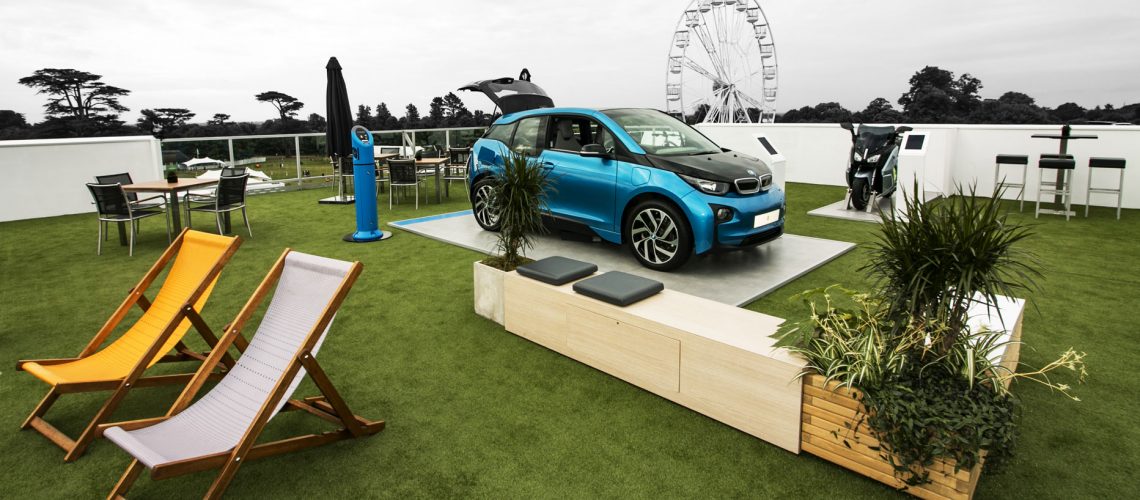The exhibition industry is in flux. But what’s happening to the industry, and more importantly the concept of the exhibition venue itself?
In today’s exhibition world everything that can change is changing, advancing or transforming into more exciting versions of their previous forms. Stands are no longer merely stands; they’re experiences or experiential spaces. Technology no longer just supports a show but has become the show. As as for the venues? It’s all change here too.
Venue at the centre
Many brands have started to realise the potential of using the venue for their show as the experience. It’s all part of the experiential strand of exhibiting, only instead of simply relying on performance these companies are now incorporating everything they have to hand to make experiences more immersive.
What this type of exhibiting becomes is a shift towards putting the venue of the exhibition or event at the centre of the activity and using the venue as the experience. But how does it work?
Two types of venue
For the venue as experience, there tend to be two approaches. There’s a total venue as experience and a make the most of a venue approach. So what do we mean by this?
Total
By total, we mean where brands move outside the usual confines of the exhibition hall and rely on a location or space to create a sense of wonder and amazement. This could be anything from having a show at the Tower of London to taking off in an aeroplane.
It’s worth remembering this approach isn’t wholly reliant on always using some well-known landmark; all it means is using surroundings that evoke certain feelings or come with a set of expectations that can be toyed with or turned on their heads.
In these types of venues technology and experiential forms are used to enhance the experience further.
— Spectacles (@Spectacles) June 2, 2017
Just look at SnapChats Spectacles campaign that sent their vending machine out across the world landing everywhere from local spots to some of the worlds most well-known landmarks.
Most of
So how does making the most of your venue differ? The simple difference is that this approach remains within the confines of a traditional exhibition arena. That doesn’t make it any less imaginative, only here it has to work within the constraints of a budget and space.
However, this hasn’t stopped brands transforming what people expect of the space they’re in. For these brands, just because you’re in an exhibition hall doesn’t mean you have to see yet another exhibition stand. You’re there to take people on a journey.
Epic day taking our @Ers.motors VIPs on the #ersrides for @BIBA #BIBA2018
A post shared by smallcarBIGCITY (@smallcarbigcity) on
So while tech and experiential enhances a total approach, this approach uses these techniques and others to transport audiences somewhere else. This can be literally, as ERS’s fleet of mini’s at BIBA 2018 to get you home, or virtually as seen with the growth in Virtual Reality at exhibitions that build new spaces and worlds for audiences to explore to explore.
Forget the venue rules
The simple rule of thumb with either approach is to forget the exhibition and focus on your brand, your audience and the story you want to tell. When it comes to building a platform for your brand, there are no rules. Who says you have to build a stand or have a meeting area? Your space (wherever that is) is your little world, so be brave and think differently.
Experience awake like never before. @nypost gives the inside scoop on the 8-hour journey of the Beautyrest x @maxrichtermusic SLEEP Experience, a live overnight concert designed to help you #BeMoreAwake Read more: https://t.co/thX8uX4301
— Beautyrest (@Beautyrest) May 5, 2018
Just look at BeautyRest who decided to escape industry trade shows and invade a music festival and a concert venue. Using SXSW and New York’s Spring Studios to show just how comfortable their beds are. It challenged expectations on every level but drew huge interest as who wouldn’t want to try out a sleeping concert?
Immersive venues
Immersion with any venue is the goal. When people are in your ‘world’, you want them to stay there without distraction. This can be hard at shows with so many competitors so close at hand. So how do you get this stranglehold on people’s attention?
This is where everything has to work together, no venue, no matter how exciting will hold attention indefinitely without a little help. Now whether this help is in the form of showmanship, technology or something else is up to you. Examples that go beyond the venue to have real success are companies like Secret Cinema or the Westworld activation at SXSW.
Secret Cinema has had enormous success showing classic movies, but like no one else. They turn their screenings into spectacular immersive performances. Recreating whole sets and flooding them with actors and effects to sink people into the experience. Gone is the cinema, the seating and everything else associated with the expected experience, leaving only the film.
Similarly, Westworld’s activation at this years SXSW worked along the same lines. Rather than attending the usual collection of events like Comic-Con and showing trailers and doing interviews, which has become the normal launch mode, they decided to try something different.
By recreating a whole section of Westworld in the heart of Austin for visitors to experience. The activation was scripted and used over 60 actors to fully immerse visitors in the world of Westworld and was a huge draw at the festival.
The great outdoors opens doors
When it comes to creating an engaging space, sometimes space is the key. Moving your show outside can for some brands work amazingly. Outdoor activations remove a lot of limitations that indoors ones can place on brands and concepts. Letting you become more imaginative in what you’re trying to achieve and how you achieve it.
The outdoors option can let companies try new ways of thinking about connecting with their audiences and let them put products in surroundings more suited to them and ask if they’d work. For example would a company who sells bikes find their audience more engaged with their product if they have space to try it out rather than merely looking at a bike mounted on a wall in a small space in a hall?
However, if a brand still wants the structure offered at ‘traditional events and exhibitions’ outdoors can offer that too. Everything from Goodwood’s Festival of Speed to music festivals and beyond are happening every year and offer brands amazing opportunities and audiences.
A great example of these working for brands can be found with Ben & Jerry’s bike-powered cinema, which took expectations of the outdoors and played with what people were getting, in the same way their ice cream does with flavours.
Loving our late night Latitude attitude!! @LatitudeFest @coopukfood pic.twitter.com/vPhrfZQSW9
— Co-op Membership N (@CoopMemberN) July 14, 2018
Also, outdoor spaces can work in more ways than one, it’s not just a promotional opportunity. Take a look at Co-Op pop up shop at this year’s Latitude festival, which works on so many levels as they’ve understood the needs of the audience and realised there was a business opportunity on top of a promo one.
That’s a wrap folks! @LatitudeFest has been a blast. We had an awesome team of @coopuk colleagues who went above & beyond 2 deliver a first-class experience to all our customers. Thanks also to @AndoverCDC for their superb support! 24hrs 2 go before @_sportcel & I leave site ?? pic.twitter.com/6qYaDg8wKE
— Alasdair Fowle (@alasdair_fowle) July 16, 2018
Know your venue
Whatever approach you decide upon, it’s always important to know your venue. As just because a venue is remarkable doesn’t mean it’s right and vice versa. You need to understand your audience and have a concept that truly brings you, them and the venue together. Different or unexpected will only get you so far, the rest is down to planning and the right idea.



